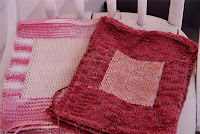At a recent used book sale, I picked up a copy of Denis Dutton’s The Art Instinct. While the title tapped into, at least in part, a subject that I have discussed with numerous former students – that of the nature of art – reading further, I found Dutton’s premise rather provocative. Basically, he sees the concept of art, and what we find aesthetically pleasing, as something that has been honed through natural selection from the time we branched off from chimpanzees.
He initially illustrates this point by discussing the concept of the landscape via a study conducted by Vitaly Komar and Alexander Melamid. In “America's Most Wanted,” Komar and Melamid conducted polls and focus groups in ten countries (funded by a grant) to study individual artistic preferences. The results? Across countries and cultures, individuals expressed an overwhelming desire to see landscapes with water, people and animals, with blue the predominant color, and rejected abstract designs along with yellow, orange, gold and teal. Since I strongly favor abstract painting over landscape (preferring to let my camera do the landscape talking), does this mean evolutionary doom and a solitary life? Komar and Melamid went on to create the “perfect landscape painting.” No one wanted to take it home and display it, so there’s hope for me just yet.
Dutton goes on to describe other important landscape features, derived from other social science hypotheses, that include certain trees, the ability to derive mystery from the setting (like, is there a path that leads to somewhere beyond the scope of the painting?) and the concept of “prospect and refuge” – an ability to survey the vista, while also having an ability to hide somewhere in the scene. So, a house, or a cave, or some other sort of shelter is also important. Hmmmm … see the connection to our hunter-gatherer ancestors?
 |
| In The Hermitage - 2009 Acrylic on canvas |
While I am still reading the book (so I’ll hold off on a final critique until I’m done), I did have to then look at the one landscape painting I have in my home. Based on a photograph, it has several of the elements described above … and it also incorporates orange, since it is an autumnal scene. It also reflects my deep appreciation of post-impressionism, but that’s another post.
What do you think of Dutton’s hypothesis? Reflect on your own artistic preferences – do they echo the above, or are they counterpoints? The jacket to the book includes “Heart of the Andes” by Frederic Church (1859). While I appreciate the quality of the composition and the artistic craftsmanship of the work, it leaves me cold. What is your initial reaction to the book cover’s art? I would love to hear your thoughts on this, so do feel free to leave comments.
More later on the rest of the book, but in the meantime, enjoy my Thanksgiving day montage.
























